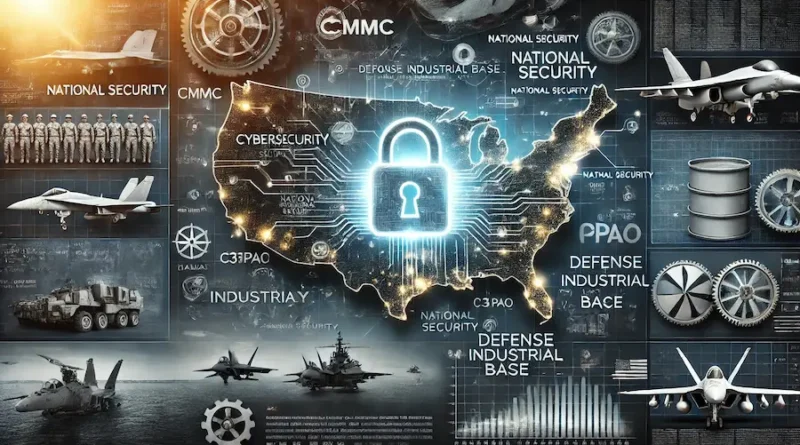What Are the Important Timelines in When CMMC Compliance Is Required
Federal contracts don’t just hinge on price or performance—they’re now tied directly to cybersecurity standards. For organizations in the defense supply chain, timing matters just as much as implementation. Understanding when to act on CMMC compliance requirements isn’t optional anymore—it’s a roadmap for staying eligible and competitive in DoD contracts.
Initial Contract Solicitation Dates Triggering CMMC Deadlines
The timeline starts the moment a new contract hits the street. If a solicitation includes CMMC as part of its requirements, contractors must demonstrate compliance by the time proposals are submitted—not awarded. That means any company responding to a request for proposal (RFP) with CMMC language needs to be ready before even hitting “send.”
This early trigger catches many off guard. You won’t have time to scramble for a last-minute CMMC level 1 assessment or reach out to a c3pao in hopes of squeezing into their calendar. Working with a CMMC RPO well ahead of the solicitation release can ensure you’re prepared when that date arrives. Missing that window could lock you out of bidding entirely, even if your pricing and qualifications are top-tier.
Key Contractual Milestones for Achieving CMMC Assessment Readiness
Contractors often overlook internal planning deadlines, but these are just as important as government-set dates. Assessment readiness needs to be part of your early project schedule—well before formal evaluation by a certified c3pao. This includes completing gap analysis, implementing security controls, and collecting evidence to meet CMMC level 2 requirements or higher, depending on contract type.
The Department of Defense expects prime contractors and subcontractors to be fully prepared before the official assessment is scheduled. Without documentation of compliance efforts or operational maturity, companies may lose eligibility or delay execution. That’s why proactive support from a CMMC RPO is essential—not only for technical implementation but for mapping the entire compliance lifecycle against contract timing.
The 180-Day Window for Post-Assessment Compliance Corrections
If your organization undergoes a CMMC assessment and falls short on a few requirements, there’s still a lifeline—just a short one. The 180-day remediation window allows for corrections and resubmission of evidence, but only if your initial assessment was close to passing. This grace period isn’t a full reset; it’s meant for tightening up small gaps, not overhauling entire systems.
During this period, your organization must work closely with the original c3pao to demonstrate improvements. All remediation efforts must be documented, verified, and approved before certification can be finalized. If your company can’t meet expectations within those six months, the whole assessment must be repeated. It’s a costly delay both in time and potential contract loss, so planning early for full compliance avoids landing in this high-stakes sprint.
Critical Proposal Submission Dates Linked to CMMC Verification
Proposal deadlines are hard stops—and CMMC verification needs to be in place before reaching them. If your organization can’t show proof of certification or has not passed the necessary level through a c3pao by the submission date, the proposal won’t be reviewed. The DoD doesn’t offer extensions or exceptions in this area.
To ensure no surprises, your CMMC level 2 compliance or level 1 certification should be locked in and clearly documented prior to proposal delivery. This includes making sure you’re listed in the Enterprise Mission Assurance Support Service (eMASS) and Supplier Performance Risk System (SPRS), where DoD officials confirm certification status. Missing even one box here could put your whole submission at risk.
Mandatory Timelines for DoD Prime Contractor CMMC Level Attainment
Prime contractors have stricter expectations. If you’re bidding as a prime, you must already hold the required CMMC level before award—especially for contracts involving controlled unclassified information (CUI). For many, that means achieving CMMC level 2 requirements in full, along with operational documentation and third-party certification.
Additionally, primes are responsible for ensuring all subcontractors meet appropriate CMMC compliance requirements. This means you’ll need to track the progress of downstream partners and help them connect with CMMC RPOs or plan their assessments well in advance. Without coordination, your team may fail collectively—impacting eligibility and execution timelines.
Reasons DoD Contract Renewal Cycles Depend on CMMC Certification Status
Renewal contracts aren’t automatic. The DoD evaluates continued performance and compliance, which includes updated CMMC certification. If your certification expires or lapses before the renewal cycle, your contract could be paused or cancelled. Many contractors don’t realize how quickly CMMC certificates become a requirement again during re-evaluation.
Because CMMC assessments are valid for three years, companies should begin re-certification at least 6–9 months before expiration to avoid disruptions. The timeline aligns with renewal planning, performance reviews, and budgeting cycles. Starting too late means you may be out of compliance by the time renewal discussions begin—putting even long-standing contracts in jeopardy.
Official DoD Notices That Set Firm Compliance Implementation Deadlines
The DoD doesn’t leave compliance timing up to chance. Through official notices and federal register publications, they provide firm implementation deadlines. Once CMMC requirements are codified into the Defense Federal Acquisition Regulation Supplement (DFARS), contracts that fall under the updated clauses become immediately subject to the timelines listed.
These implementation notices include specific dates for enforcement, proposal cutoff, certification levels, and subcontractor expectations. Staying informed through updates from the DoD and your chosen CMMC RPO is essential. Contractors relying on outdated timelines may miscalculate readiness and miss the window to compete or renew—setting the stage for unexpected contract losses.

